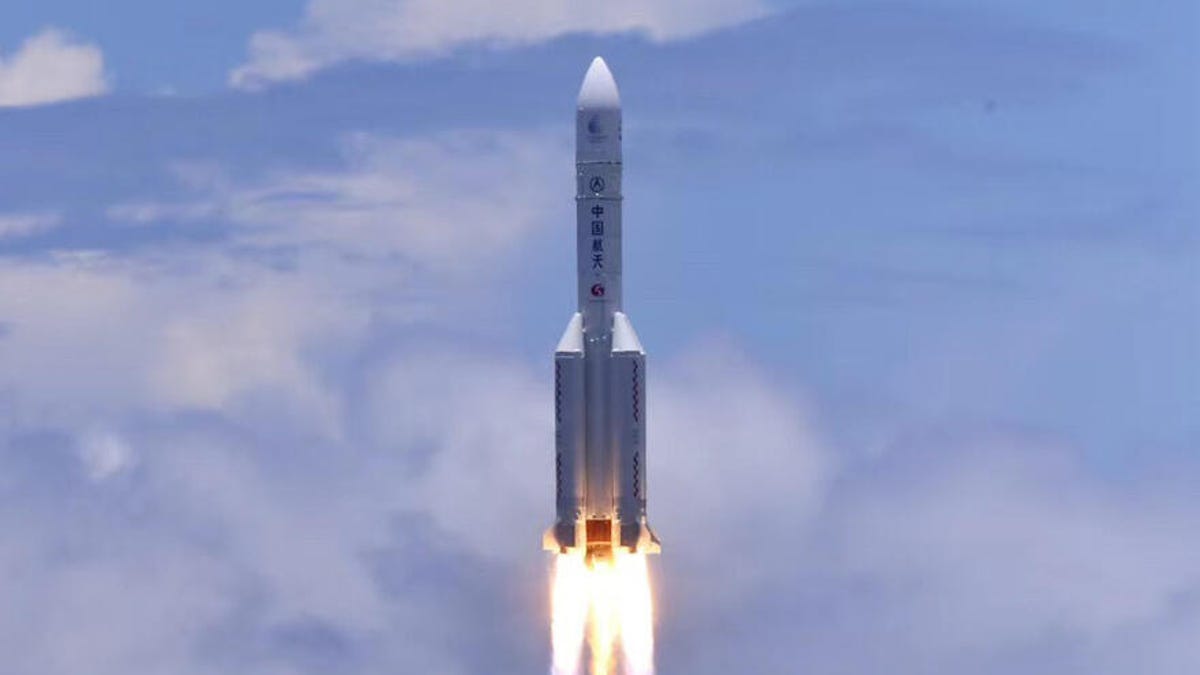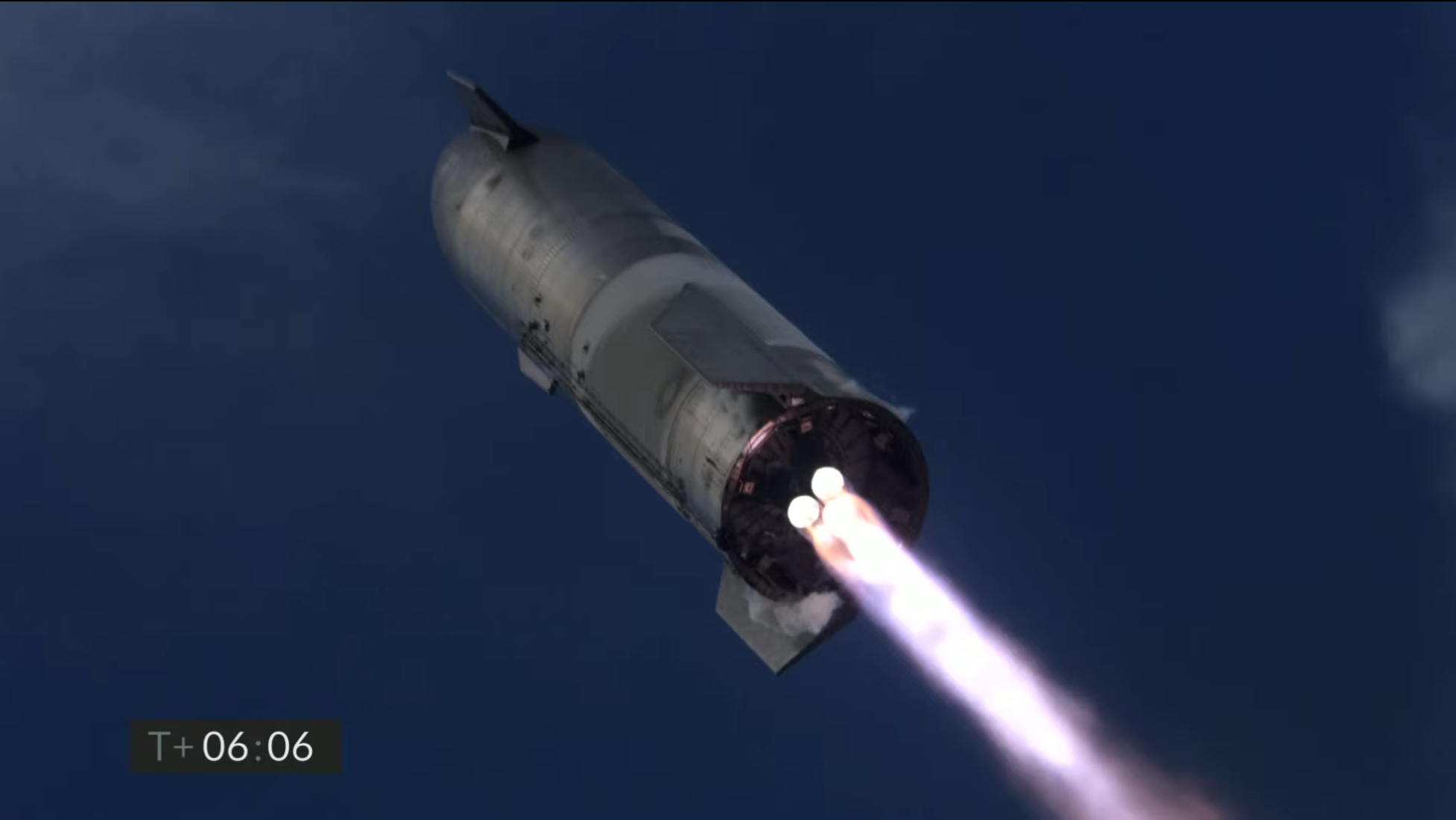In a giant leap, China will launch its reusable spacecraft as soon as 2027, much earlier than expected. If it succeeds, the country can significantly reduce the cost of its space endeavors.
The reusable spacecraft can travel with seven astronauts and would play a critical role in constructing China’s space station and moon landing mission.
Reusability is critical for low-cost and rapid access to space by deploying large payloads into orbit. The reusability allows rapid turnaround and high launch cadence.
Earlier in May 2023, as the EurAsian Times reported, a reusable Chinese spacecraft returned to Earth after staying in orbit for 276 days, demonstrating China’s far-reaching space capabilities.
The Chinese state-run China Aerospace Science and Technology Corporation kept the veil of secrecy on the project, but private space services company LeoLabs revealed that the Chinese reusable space vehicle “docked with or captured a separate object on multiple occasions” during the orbit.
Experts suggest that an aircraft like this could be used to “surveil, disrupt and outright attack an opponent’s space-based assets” or conversely can “retrieve or otherwise interact with friendly ones.”
Coming close to this development, the news of China gearing up to send a reusable launch vehicle to space ahead of schedule has caught the big countries by surprise.
It was announced by the Deputy Chief Engineering designer of the country’s manned space program. According to the China Manned Space Engineering Office, the spacecraft will be reusable for both near-Earth orbit and deep-space exploration missions.

Yang Liwei, the first Chinese sent into space, told Guangzhou Daily on Monday that the new spacecraft could transport seven astronauts. It will also play a critical role in the future construction of China’s space station and moon landing mission,” Yang said.
The capacity to carry seven astronauts will be comparable to the new generation of American manned spacecraft – SpaceX’s Dragon V2 and Boeing’s CST-100 Starliner. Nasa’s Orion MPCV carries six.
At 8.8 meters and weighing 21.6 tons, it is also twice the size of the Dragon V2, which weighs about 9.5 tons.
The new spacecraft will be used for China’s crewed moon landing mission, working with a separate landing spaceship, specialized lunar spacesuits, manned rovers, and other equipment to achieve this goal by 2030.
The concept of reusable launch vehicles is to substantially reduce launch costs and, therefore, provide routine access to space. China’s full-size prototype completed a 67-hour test flight in 2020. It was carried by a Long March 5 rocket.
It uses new materials and structures to increase its heat resistance three to four times that of China’s Shenzhou spacecraft. The materials can withstand temperatures as high as 3000 degrees Fahrenheit during re-entry, while the weight of the heat-resistant structure has been reduced by more than 30 percent.
“The spacecraft has also been designed to be reused – the return capsule will be ready for the next mission once it is examined and its ‘coating’ replaced. That means – theoretically at least – key parts of the spacecraft can be reused up to 10 times, significantly reducing launch costs,” the South China Morning Post reported.
Zhou Jianping, the chief designer of China’s manned space program, told state broadcaster CCTV last month that the latest design retained a “blunt bullet-head shape,” but the internal space is larger than previous versions. “The design has been streamlined from three compartments to two, making it safer and more economical,” he said.
China’s March Into Space
Space has been a double-edged sword for the US forces. It is both a great force multiplier for the US military and also a chink in its armor. For long, it has rejoiced as its private companies like SpaceX have the upper hand in space technology.
A CSIS report underscored how private firms like SpaceX, with its partially reusable Falcon 9 rocket and Starlink constellation of satellites, have many more operational satellites in orbit than China.
If China’s giant strides in the field are anything to go by, it will soon be a thing of passé.
The EurAsian Times reported that China had beaten US-based SpaceX by successfully launching the world’s first methane-liquid oxygen rocket into orbit on July 12. A private Chinese firm, LandSpace, conducted the launch.
The rocket successfully deployed a test payload into a sun-synchronous orbit (SSO), becoming the world’s first to execute this remarkable feat. Methane is considered a cleaner, safer, and more cost-effective propellant for reusable rockets, enhancing China’s position in the field.
SpaceX’s Starship spacecraft and Super Heavy rocket – collectively called Starship – represent a fully reusable transportation system designed to carry crew and cargo to Earth orbit, the Moon, Mars, and beyond. Starship is aimed to be the world’s most powerful launch vehicle ever developed.
Since 2020 SpaceX has performed multiple sub-orbital test flights of Starship from Starbase located in Texas to make the human species multi-planetary.
These tests, the company claims, “successfully demonstrated an unprecedented approach to controlled flight, during which the vehicle orients itself for a controlled aerodynamic descent, belly-first like a skydiver, accomplished by independent movement of two forward and two aft flaps on Starship, before lighting engines and flipping itself to a vertical configuration for landing.”

Flying like this removes the need for wings and a tailplane, protects the vehicle from the extreme heat of orbital entry, and minimizes the propellant needed for landing. It also enables missions to destinations across the Solar System where runways do not exist.
In 2021, SpaceX broke ground on the launch and catch tower at Starbase. The tower rises 480 feet in height—the tallest launch tower in the world—and is designed to support the launch, vehicle integration, and catch of the Super Heavy rocket booster.
Catching the booster reduces mass from the launch vehicle, moves hardware complexity to the ground, and enables rapid reuse of the rocket.
The tower’s two giant robotic arms lift and stack Starship onto Super Heavy for final integration ahead of the flight. Following liftoff, and after the two stages separate in-flight, Super Heavy will return to the launch site, reignite its engines to slow the vehicle down, and the tower’s arms will catch the rocket booster before re-stacking it on the orbital launch mount for its next flight.
SpaceX is working on further tests for its orbital flights using the ‘Super Heavy’ booster stage as early as July, with full operational service by 2023. This will have far-reaching military and security implications.
Starship is being promoted as rapid point-to-point transport across the Earth, carrying troops and cargo to a distant operational deployment within half an hour. Now other US companies like Blue Origin and Rocketlab; and Europe’s Arianespace are pursuing reusable launch vehicle designs.
- Ritu Sharma has been a journalist for over a decade, writing on defense, foreign affairs, and nuclear technology.
- She can be reached at ritu.sharma (at) mail.com




